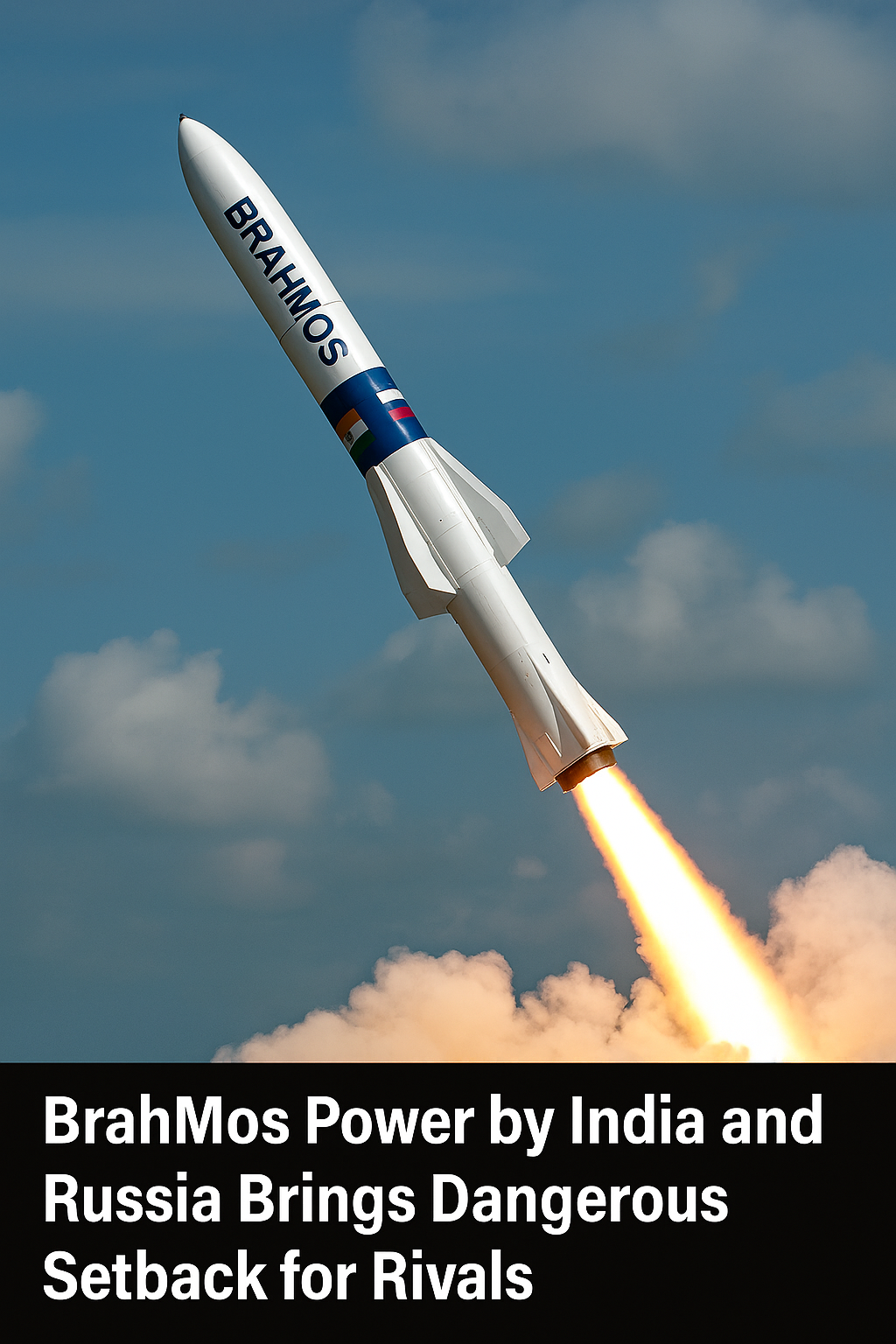Talks to create a more powerful and modern BrahMos missile have begun between Russia and India. This comes after the missile was used successfully in Operation Sindoor, where it struck terrorist camps in Pakistan and Pakistan-occupied Kashmir (PoK).
India and Russia to Make a More Powerful BrahMos Missile Together
This new missile will be made at a special factory built in Uttar Pradesh, India. The factory cost ₹300 crore and is part of a big defense project to make India stronger and more self-reliant in weapons production. The new facility, which is a part of the Uttar Pradesh Defense Industrial Corridor, is situated on 80 hectares of land in Lucknow.
This factory has one main unit and seven smaller units that support it. The main goal of this factory is to make more missiles and make them faster and cheaper. The production will not just help India’s defense but also help with creating jobs and boosting the local economy.
This new BrahMos missile will be made in large numbers. Making the missile in India means that the country will not need to buy important parts from other countries anymore. This helps save money and makes India more independent. Earlier, some parts were being bought from Russia. Now, those parts will be made inside India.
Jet Black Threat: Pakistan’s J-35 Fighters Could Turn India’s Airspace into a No-Fly Zone
Lower Cost, More Jobs, and Bigger Exports
As of right now, one BrahMos missile is expected to cost around ₹34 crore. But if more of them are made at once in India, the cost can come down. This is because when you make something in bulk and use local materials, the cost for each one becomes lower.
As the factory starts making more missiles, new jobs will be created in the nearby areas. People working in small factories that make missile parts will also benefit. These small factories will make special materials and components needed to build the BrahMos missile. This will help many businesses grow and develop.
Another big advantage is that India will be able to sell more missiles to other countries. This means India can earn money by exporting them. With more missiles being made and at a lower cost, more countries may want to buy from India. This will help improve India’s image in the global arms market.
The project supports government schemes like Make in India and Atmanirbhar Bharat. These programmes aim to make India strong and self-sufficient in defense and other sectors. When a country builds its own defense weapons, it becomes more powerful and prepared.
Operation Sindoor and BrahMos Missile Power
India recently conducted Operation Sindoor, using the BrahMos missile. SU-30 MKI fighter aircraft fired the missile in this operation. These aircraft fired BrahMos missiles at the Noor Khan Airbase, which is located close to Rawalpindi and is a vital airbase in Pakistan. This airbase is very important for Pakistan as it controls northern air operations and is close to its nuclear command center.
Missiles were also launched at the headquarters of a major terrorist group in Bahawalpur, Pakistan. These attacks showed the accuracy and power of the BrahMos missile.
BrahMos missiles are renowned for their strength and speed. It has a maximum velocity of Mach 2.8, which is nearly three times the speed of sound. Because of its speed, opposing defense systems find it extremely difficult to detect or halt.
The range of the missile varies from 290 to 400 kilometers, depending on the model. It can be launched from the ground, from ships, or from fighter jets. This flexibility makes it very dangerous and effective in war.
Reports say that neither Pakistan nor China has any missile defense system that can stop BrahMos. This gives India a big advantage in protecting itself and in taking action when needed.
The missile system’s growing power and production ability has put pressure on enemy countries. Pakistan and China now face a big challenge because of this missile. As India and Russia work together to improve BrahMos, it becomes even more of a threat to those who wish to harm India.
The partnership between India and Russia in this area continues to be strong. Together, they have built one of the world’s fastest and most reliable missiles. Now, by setting up local factories, India is also making sure it can continue to produce these weapons on its own without any help from other countries.
This latest move marks a new chapter in India’s defense growth. In addition to being a potent weapon, the BrahMos missile represents India’s increasing might and autonomy in the defense industry. Furthermore, it is evident to anyone seeing from the opposite side of the border that India is prepared.

